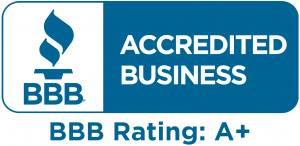LED is the light train that shows no sign of stopping. It’s predicted that LEDs will lower the demand for electricity overall in North America by one-third by 2027. So, all aboard for an incomparable ride.
Placed side by side with CFLs (compact fluorescent lamps) and incandescent bulbs, LEDs shine in more ways than one.
1. They’re generally more durable, efficient and versatile for many different lighting needs.
2. LEDs are especially compatible for use with recessed lighting than CFLs or incandescents. Why? LEDs send light in specific directions. CFLs (compact fluorescent lights) and incandescent lights produce both heat and light in every direction. That means waste. As much as 50 percent of the light is lost within the fixture without shining out to produce illumination.
3. LEDs start cool and stay cool. There’s no warm-up time. Nor do LEDs get as hot as incandescents. The diodes present in LED lighting create efficient light that doesn’t produce heat. By contrast, incandescent light bulbs produce light with heat passing through the filament.
4. When compared to CFLs and incandescent bulbs, LEDs are generally more durable, efficient and versatile for many different lighting needs. LEDs won’t break under normal use.
5. “Live long and shine on” might well be the LED motto. CFLs have also been touted as energy-savers compared to incandescent lighting. That’s true. CFLs do use 25-35% less energy than incandescent bulbs, but LED’s outperform CFLs by far in energy efficiency, especially LED’s rated by ENERGY STAR’s rigorous standards of performance.
The life span of an LED light is over than 60,000 hours (nearly 7 years), compared to 1,000 hours for a similar incandescent light bulb. One LED light bulb produces the same wattage as 60 incandescent bulbs. The price of one LED light bulb is less than half of 60 incandescent light bulbs.
LED’s long life isn’t just a money saver, it’s a time saver, too, since it rarely needs to be replaced. This makes LED especially desirable for hard-to-get-at locations.
6. No special fixtures are needed for LED’s. They’re available with the same standard screw design to enable use in standard light fixtures.
7. Durability is another plus. As solid state components, LEDs are difficult to damage with external shock, unlike the much more fragile fluorescent and incandescent bulbs.
Drawbacks? Come on, you say, there must be .
A white LED a high level of short-wavelength blue light, compared to incandescent, makes it a brighter daylight color, which is generally considered a plus. But this brighter white has been found to suppress melatonin in the body. Melatonin is a marker of circadian disruption, which includes disrupted sleep. There may be areas in your home that incandescent lighting is more desirable and healthier.
Nothing’s perfect. LED’s, like all other light sources, degrade over time. LED’s can shift color due to age and temperature. This degradation is also indicated by lights flickering, becoming dim and providing uneven light over time. However, you can avoid much of this by buying LED’s with an Energy Star rating. To achieve an Energy Star rating, LED’s must prove brightness and light output over an extended time. Factors such as color quality, efficiency, instantaneous lighting and the absence of flickering are also tested.
Even with the best quality LED’s, the 60,000 hour life span can be significantly shorted by factors such as operating current and temperature. Most users will likely find that the benefits of LED lighting far outweighs its drawbacks in terms of quality, convenience, energy efficiency and savings.
Call us at Stapleton Electric at 778-985-9395 and we’ll enlighten you further about LED lighting and answer any questions you have. Need lighting installed or repaired? Get in touch with us. You’re also welcome to contact us. We look forward to brightening your day.


